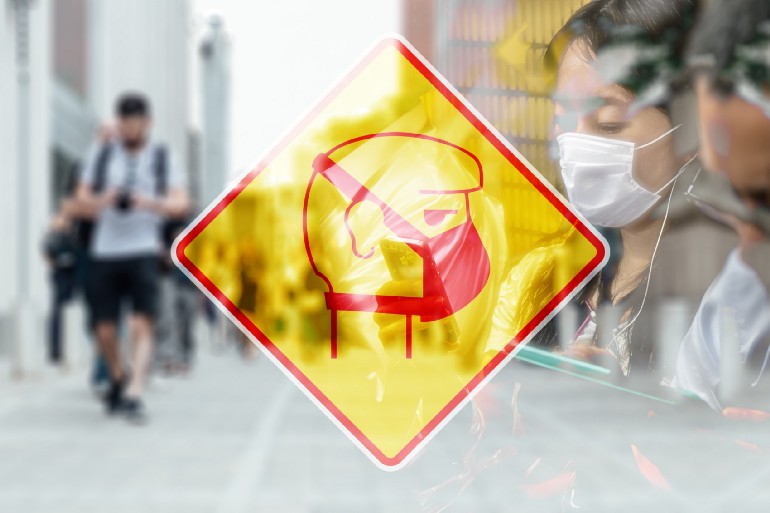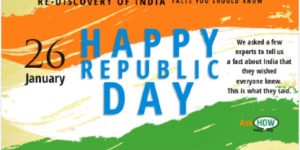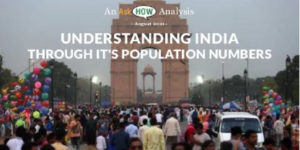How is China doing it?featured
India has started removing the restrictions imposed on its citizens to slow the spread of novel Corona Virus. For inspiration, it could look towards countries like Hong Kong and New Zealand, which have been successful in tackling the pandemic. However, these countries are small. The population of both is lower than that of many cities in India! Perhaps, India should be tracking China — the only country with the size and complexity that matches India.
China has opened up many of its cities and life there is ‘normal.’ What did they do? What are they doing now to prevent a second wave of infection? Is it working? I wrote a very small post on this topic a week ago. My intention was to use the post to spark conversations with people living in China. I hoped to get some insights into what day to day life is in the country and what the state is doing to combat Covid -19. Here is a post based on first set of interactions.

But first, let us tackle a few questions that I got from people. The first of them being ‘Do you trust China?’
But, but, but…China?
Are China’s Covid 19 numbers trustworthy? The fact that more people are dying in US and Europe every week, than have died in China since the beginning of the disease, makes people very suspicious about the declared infection and mortality numbers from that country. However, I think we can side step this question. The numbers out of China may or may not be reliable but the actions of the government (s) there speak volumes. China was first to impose a lockdown and it was a lockdown that many called draconian. In fact, I would argue that the world made a mistake by relying on their numbers and not on their actions!
Another question I got is a version of, “Do you think a democracy can replicate what China is doing?”. Maybe yes, maybe no. I believe the question is premature. You can answer it only if you know what that country is doing and most of us don’t. Also, even if you find that some of the Chinese actions are not replicable elsewhere, it is useful to know what those actions were trying to achieve and find a substitute.
The third objection I got from my connections was perhaps the most meaningful. Most cities in China have been open only for around couple of months. Maybe the second wave infection numbers are not large enough to be noticed? Possibly. But it makes sense to begin studying what China is doing. If they reimpose a lockdown a few weeks from now, then we would have some sense of how effective or ineffective the measures taken by the Chinese were in slowing the infection.
Given this background, let us look at what the situation is in China. As far as I can make out, the country has unlocked many of its cities. What does it mean?
Situation in China
Friends and friends of friends [1], living in four different cities in China tell me that their life is normal. What does that mean? It means that people attend offices as they used to before the crisis. It means that that they take public transport to work although they prefer cabs. It means that they can travel anywhere in the city, although in general they prefer not to. It means that they can go to restaurants, although with some restrictions. So, the new normal is different from the Before Corona (BC) times but it is also very different from what life is currently in India and from what I understand life to be in most of Europe and United States.
News reports and data support these anecdotal accounts. Media houses have come up with video reports on cities, including Wuhan, that show many people on road, in offices and in restaurants. Data on economic indictors like oil consumption and air pollution shows that the economic activity is much higher than it was during their lockdown.
Of course, treating a country of 1.4 billion people as a monolith is gross oversimplification. There are differences between the level of restrictions in cities and provinces. Beijing and the north in general have had more stringent restrictions than Shanghai for example. Heilongjiang in North has seen a surge of cases in the last month and Wuhan, understandably is the most cautious. But in general, life seems to be returning to normal with even gyms and foot massage parlors being opened up in Guanzhou!
China’s strategy to tackle Covid — 19 has had two distinct phases. The lockdown phase to sharply reduce the number of active cases and the second phase in which the effective transmission rate of the disease is kept very low. I should note here that this is very different strategy from just reducing the effective transmission rate or ‘flattening the curve’. Once you have a high number of cases, reducing the effective transmission rate to below 1 can still mean lot of cases. For example, if you have 1,00,000 infected and the transmission rate is 0.9, there would be 90,000 infected in the next round! China has aimed to first reduce the active cases to near zero and then open up while trying to keep the transmission rate very low.
The lockdown phase
The country was ‘lucky’ that the threat of outbreak outside Wuhan became serious only around the third week of January which was the beginning of the Chinese New Year (CNY). The CNY time is when migrants from villages go back home and the offices and factories are closed. Big cities become relatively deserted and most businesses take a break. The Chinese governments extended the holidays and strictly prevented intercity travel. They also used the shutdown period to build capacities for treatment and to trace all people who had travelled from Wuhan and their contacts and isolate / quarantine them.
The measures taken, varied from city to city and even within cities, but some common themes that I could find were
· Restricting people from leaving their homes. In many parts of cities, it meant that each household was issued one pass, which could be used by one person in the household, once in two days. This restriction was supported by what is probably the best home delivery supply chain in the world. Unlike, what I have seen in India and heard about in parts of US, the home delivery system kept delivering. It slowed down from forty-five-minute delivery to next day delivery, and there were restrictions on the number of items you could order, but there was never a situation where you couldn’t get deliveries at all. The delivery protocols were put in place early. Staff had to wear masks and would not deliver at the doorstep but at a designated point from where the householder could collect their deliveries without contact. Presumably, there were strict protocols for the delivery folk while collecting the goods too.
· Severely restricting interprovince movement. The only interprovince movement allowed was for logistics purpose and in many provinces, trucks could move only within their own province and had to offload to other trucks in case of interprovince movement. The severest restriction was in case of Wuhan where a truck driver taking supplies into the city had to undergo fourteen days of quarantine on return. The trucking companies could afford to do this as the lockdown meant that they had many more drivers available than they had engaged trucks.
· Temperature checks and isolation. Temperature checks were, and in most cases still are, everywhere. You had to get your temperature checked if you entered a store or an office. Your temperature was checked if you entered a city and your temperature was checked even if you went into the parking lot of your building. The manpower for this temperature check was provided by the premises for private spaces like offices, or by the Communist Party for public spaces.
· Control by the Chinese Communist Party. The cities are divided in grids and each grid was assigned to a set of party workers. The party workers would run temperature checks in public spaces and also trace the contacts of infected person. Many local level clinics were opened that did a first level screening and in case of fever sent the patient to a separate hospital.
· Isolation. To my mind this is the biggest difference between China and the West and to some extent even India. Anyone with a high temperature was immediately taken to a separate hospital or a separate ward in the hospital where they were isolated from other patients and were tested by staff wearing full protective gear. If they tested positive for Covid -19, the contact racing machinery would jump into action and ensure that all of their contacts were traced and tested. Many times, repeatedly tested.
So, what is the state doing to ensure that society does not have another uncontrolled outbreak? The four pillars of Chinese state response seem to be Quarantine, Isolation, social distancing and masks and use of Mobile apps to enforce the above. Let us take each of them in turn.
Note: In each of the sections, I have first summarized what I learnt from my interactions and then jotted down the questions that came up in my mind.
Quarantine
China started compulsory quarantining of its foreign visitors a few months ago. Earlier it depended on the country of origin but now everyone has to compulsorily undergo fourteen days of quarantine. From a couple of examples that I have heard, you are tested when you enter the country and if you come up negative, you check yourself into a hotel room and don’t come out for fourteen days. Food is delivered at your doorstep three times a day. At the end of fourteen days, you are tested again and have to be negative for you to be let in with the general population.
A similar process exists even for people migrating within China. If as a migrant worker, you have to go back to work, you have to first scan your QR code before you get on the train, and then on reaching the destination, you need to get tested and quarantine yourself for at least fourteen days. Many businesses have earmarked dormitories for enabling such quarantine.
My questions / comments: I can understand high margin businesses, such as Foxconn, absorbing the cost of fourteen-day quarantine for their workers. But I am not sure how a low margin business like a garment or furniture manufacturer can afford to keep workers idle for two weeks. From what I hear, most such businesses are making do with local workers. Right now, this is possible, as their own markets across US, Europe and Asia are under lockdown. It would be interesting to see how this plays out as and when demand for the low margin factories starts picking up.
It is worth noting here that Singapore, a tiny country compared to China, had Covid-19 under control till the disease reached the dormitories of its migrant workers. Media reports state that nearly 90% of its cases are in migrant workers and one reason is the cramped conditions in those dormitories. I imagine that such cramped living conditions exist in China too, both in its dormitories as well as in its poorer non-migrant homes.
I am also curious to know of the actual experience of quarantines. There are stories that even in a supposedly disciplined culture as South Korea, many people broke quarantine. People would simply leave their phones at home when they were breaking quarantine. The problem was severe enough for the country to start making people wear tracking bracelets. It is likely that a much larger and more heterogenous country like China also has this problem.
Isolation of suspect cases
As I mentioned earlier, the most important difference between China and countries in the West in their Covid strategy may be the early use of Isolation wards. People are encouraged to report symptoms, such as fever, very early. My contacts spoke of cases where a couple of days of fever was reported to local authorities and the hospital send a vehicle and personnel in Personnel Protective Gear to take the patient to an isolation ward. The patient was tested over two to three days and during the time was kept completely isolated. Only when the doctors were convinced that the patient was not suffering from Covid -19 was the patient allowed to rejoin their family. The thinking seems to be that in-family transmission is significantly responsible for spreading the disease and hence, it is very important to break the chain early.
This is in sharp contrast to what I hear from my friends in the West where suspected patients are asked to remain at home unless their condition requires hospitalization.
Of course, the Chinese strategy cannot work if you already have a very high number of cases in your state / county. But as far as I can make out, even states / provinces in the West, which currently have a low number of cases, are not trying to implement this strategy.
Masks and other social distancing
Apparently, masks were everywhere. The people I talked to said that they rarely, if ever, see anyone not wearing a mask. In the colorful phrase of one gentleman, “It seems that nowadays babies come out of their mother’s womb wearing masks.” I should note here that in some provinces, masks are compulsory only in enclosed public places like malls and elevators.
There are reasons to think that masks might be the cheapest and the most underrated public health intervention. Nicholas Nassim Taleb, explains here that even if a mask reduces the probability of infection by only 50%, if two people wear them then the probability of them infecting each other reduces by 75%. The benefit of reduction in transmission rates compounds as more and more people wear masks.
Empirically, the countries that seem to have the disease in control, like Hong Kong, Taiwan and South Korea, all have a widespread adherence to the ethic of wearing masks in public space. Tellingly, Singapore, which has been struggling with a sever outbreak in its migrant worker population living in dormitories, made masks compulsory only recently. Of course, many more factors are surely at play in all these countries, but to my mind, cultural and / or legal enforcement of wearing masks in public spaces is a low cost and potentially high return measure.
Even in Europe, the Czech Republic seems to be doing better than its neighbors and one of the reason could very well be the high emphasis the country’s culture has placed on wearing masks.
The strangest reaction to masks has come United States and it starts right from the top. President Trump refused to wear one even as his wife urged all Americans to do so. Vice President Pence, the head of White House Corona virus task force, did not wear one while visiting Covid-19 patients! And then, there is the case of a shooting after an altercation on wearing masks.
China has also put in place other norms for social distancing such as ensuring restaurants work only to 50% of capacity and that public transport options do not get full. However, I think the implementation of these norms may be uneven at best. People are suggesting that they already see crowded buses and trains and that as the economic activity picks up, social distancing may become more difficult. After all, if you reduce the number of people in train coaches, you would be crowding them on stations!
My questions / comments: There are some subtleties in use of masks. When I step out of my apartment to buy groceries, I see a very high usage of masks but the situation becomes more complicated if I look closely. People remove their masks when talking or sitting with their regular colleagues. For example, watchmen talking to other watchmen in apartment complexes and workers sitting idle at construction sites. It is almost as if, ‘I know this person very well and he will definitely not give me the disease.’
I bring this up, because in a video on Wuhan post Covid, I saw a number of senior citizens sitting together without masks (around 5.50). It is possible that the video maker used old coverage but if it is not the case, it was the worst demographic to do that. Hence, my question, how does China deal with the instinct of not wearing masks with ‘friends?’ How does social distancing continue when no cases are discovered in your neighborhood for a few weeks?
Mobile based tracking
Over the period of last few weeks, the Green, Red and Amber codes on mobile phones have become central to people living in China. These QR codes are available on existing applications from Alibaba and Tencent. You need to scan your QR code before getting in and out of offices, public transport and sometimes even localities. Trains in Shanghai have separate coaches for Green and Amber status. It is not clear how your status gets assigned — ostensibly it is on the basis of your own quarantine status and your recent proximity to others who have Amber or Red status or if you were in touch with someone whose status changed to Amber or Red.
The Chinese state has also seems to be using mobile data extensively for contact tracing. If you test positive, then your movements in the past few days can be tracked based on your mobile data and all other mobile owners who spent time with you identified. This would clearly be the most difficult measure for most countries to replicate.
Testing
Underpinning the four pillars of China strategy is widespread and extensive testing. One of the persons I talked to told me that in the last couple of months, he has been tested thrice. The governments tests you, if you come from some other country or if you migrate from one city to another. Your employer may test you before allowing you in the office and even some private schools have tested the kids and teachers before restarting. Of course, if you display any fever like symptoms, or if you are in contact with a confirmed patient, you would be tested multiple times. This is all PCR based tests and there is also thermal scanning.
The most widespread testing seems to be testing of temperature using thermal scanners. China used it extensively during lockdown and continues to use it even today. A PCR test takes time and is impractical in a place that sees many visitors and thermal scanners continue to be the first line of China’s defense.
My questions / comments: One big advantage of the country seems to be its manufacturing capabilities as it has been able to develop a very high number of test kits. China has also been able to speed up its testing, in many instances getting results in hours rather than days. Clearly other countries have some catching up to do.
One question that comes up is how does the country tackle false positives? If the disease incidence in an area is low then it is possible that the false positives outnumber the true positives if the testing is widespread and of asymptomatic population.
One of the diabolical things about Covid 19 is that you could be asymptomatic but still be a carrier of the virus. A thermal scanner wouldn’t work in identifying such a person. If however, the extensive use of thermal scanners is effective, could it be that asymptomatic carriers do not shed as many viruses as someone running a temperature?
Summary
· China has opened many of its cities and life there is ‘normal’
· We may or may not trust China’s numbers but should be trusting their actions.
· It is worth studying what the country is doing even if that is not replicable 100% in other societies and even if there is a second wave of infections in that country.
· China’s actions started with CNY. The cities were relatively deserted and offices were closed. The Chinese government extended the holidays and also ramped up capacities as well as tested and tracked all visitors from Wuhan.
· The extended stay at home was at least partly enabled by a very extensive and efficient home delivery infrastructure.
· One crucial difference between China and other countries is isolation of all suspected and confirmed Covid -19 patients.
· Cities are quarantining all visitors whether from overseas or from other cities.
· Masks are ubiquitous. Social distancing is becoming more difficult as more people use public transport.
· QR code-based apps underpin China’s efforts.
· Extraordinarily large number of tests performed in the country and an extensive use of thermal scanners.
I have written this post after talking to people living in China, directly and indirectly and by reading articles and watching videos. My idea is to spark a conversation. Please do point out errors of omission and commission and help take the conversation forward.
Related content: What would you do?
Author –
Yogesh Upadhyaya
(Yogesh Upadhyaya is one of the founders of AskHow India. Blogs are personal views.)
You can follow AskHow India (@AskHowIndia) or me (@Uppi89) on twitter or me on LinkedIn






